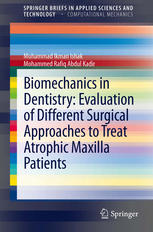

Most ebook files are in PDF format, so you can easily read them using various software such as Foxit Reader or directly on the Google Chrome browser.
Some ebook files are released by publishers in other formats such as .awz, .mobi, .epub, .fb2, etc. You may need to install specific software to read these formats on mobile/PC, such as Calibre.
Please read the tutorial at this link: https://ebookbell.com/faq
We offer FREE conversion to the popular formats you request; however, this may take some time. Therefore, right after payment, please email us, and we will try to provide the service as quickly as possible.
For some exceptional file formats or broken links (if any), please refrain from opening any disputes. Instead, email us first, and we will try to assist within a maximum of 6 hours.
EbookBell Team

5.0
58 reviewsThis book shows computational finite element simulations to analyse the strength of implant anchorage for intrasinus and extramaxillary approaches under various occlusal loading locations and directions. Three-dimensional model of the craniofacial area surrounding the region of interest, soft tissue and framework are developed using computed tomography image datasets. The zygomatic and standard dental implants are modeled using a conventional computer-aided design software and placed at the appropriate location. Material properties are assigned appropriately for the cortical, cancellous bones and implants with Masseter forces applied at the zygomatic arch and occlusal loadings applied on the framework surface.